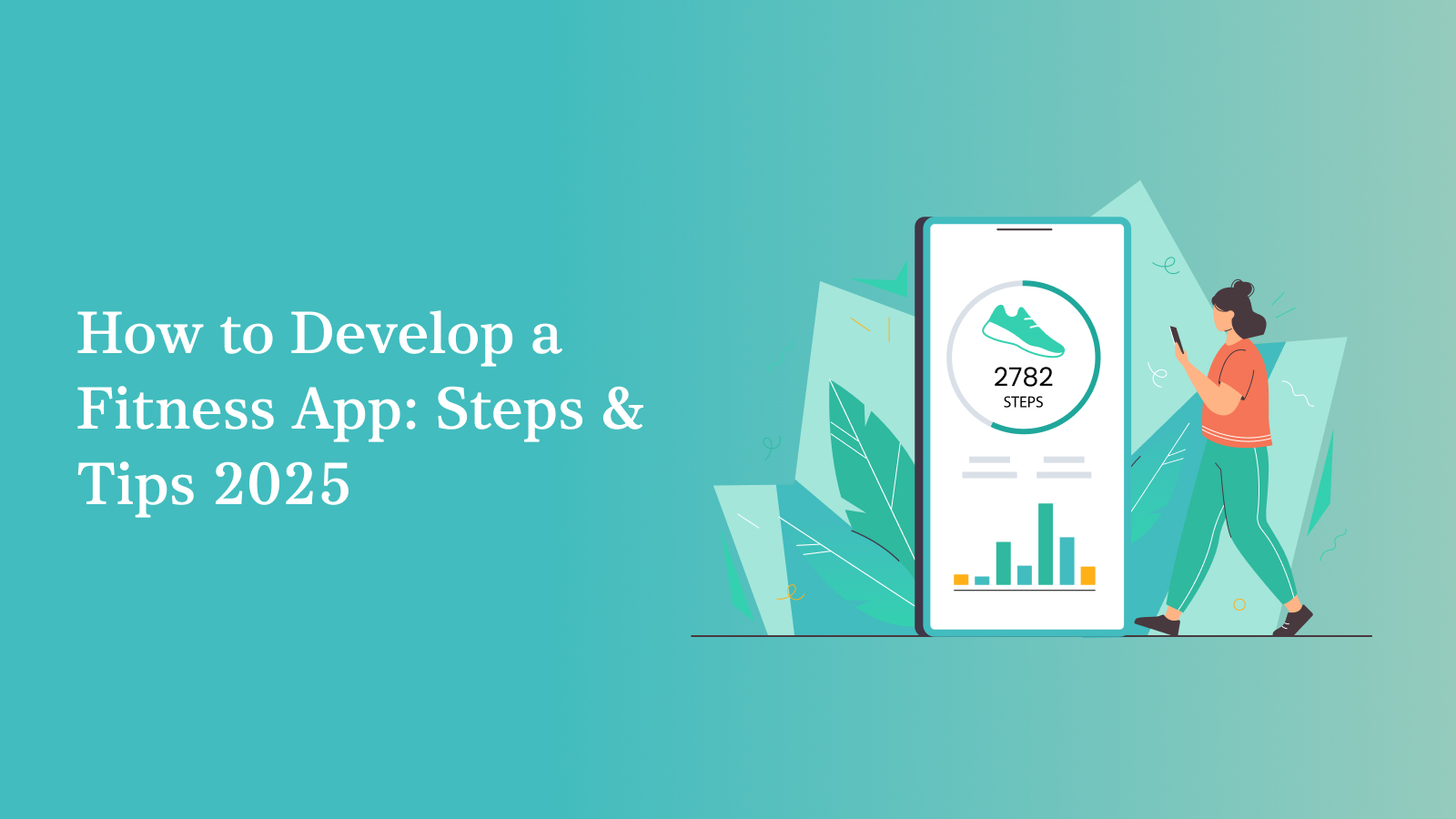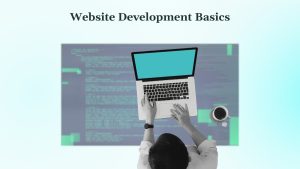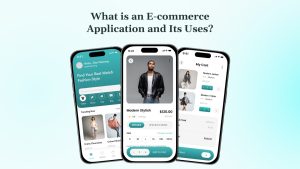The fitness app market in 2025 is booming, with the global market expected to reach USD 13.59 billion, driven by rising health consciousness and wearable technology adoption. Building a fitness app offers you an opportunity to tap into this growing market. As the industry evolves in 2025, successful apps will need to combine smart technology, smooth UI/UX, and strong community elements.
This guide provides a step-by-step roadmap to create a standout fitness app, covering planning, development, monetization, and marketing strategies tailored for 2025.
You’ll learn how to define your app’s vision, select the right technology, design a user-friendly experience, and launch effectively. With practical tips and insights, this blog equips you to build an app that resonates with users and succeeds in a competitive environment.
Key Takeaways
- Fitness apps remain popular in 2025 due to health trends and wearable integration.
- Define a niche, target audience, and unique features to stand out.
- Use tech stacks like Flutter or Firebase for scalable, cross-platform apps.
- Prioritize seamless UI/UX, gamification, and accessibility for user engagement.
- Monetize through subscriptions or in-app purchases and market with App Store Optimization and influencers.
Define Your Fitness App Vision
Before coding begins, you need a clear vision to guide your fitness app’s development. This involves pinpointing your niche, understanding your audience, and setting your app apart in a crowded market. A well-defined vision ensures your app meets user needs and aligns with your business goals.
Start by choosing a niche, such as general fitness, high-intensity interval training (HIIT), yoga, or diet tracking. Identify your target audience: beginners looking for simple workouts, busy professionals needing quick routines, or athletes seeking advanced metrics. Conduct market research by analyzing competitors like MyFitnessPal or Strava to identify gaps, such as underserved niches or missing features. Define your unique value proposition, like personalized AI coaching or community-driven challenges, to differentiate your app and attract users.
With your vision established, let’s explore the core features that will bring your fitness app to life.
Plan the Core Features

Planning your app’s features is critical to delivering value to users and ensuring engagement. You’ll need to balance essential functionalities that meet basic user expectations with advanced features that align with 2025’s technological trends. This step helps you prioritize development efforts and create a compelling user experience.
Essential Features
Your app should include foundational features to meet user needs effectively. User registration and onboarding streamline sign-ups with options like email or social media login. Workout tracking lets users log exercises and set goals, such as running 5K weekly. A video-based workout library provides guided routines, while progress analytics display metrics like calories burned or strength gains. Notifications and reminders keep users motivated, and wearable integration with devices like Apple Watch or Fitbit syncs real-time health data.
- Key Features: Registration, workout tracking, video library, analytics, notifications, wearable sync.
- Why They Matter: Build trust, engagement, and seamless integration with user devices.
Advanced and Emerging Features in 2025
To stand out, incorporate cutting-edge features. AI-powered coaching offers personalized workout or nutrition advice based on user data. Augmented reality (AR) workouts create immersive virtual fitness rooms. Personalized meal plans sync with fitness goals, while community challenges and leaderboards foster social engagement. Integration with mental health tools, like meditation guides, supports holistic wellness.
- Key Features: AI coaching, AR workouts, meal plans, social challenges, mental health tools.
- Why They Matter: Enhance personalization and engagement with modern technology.
With your features planned, let’s select the technology stack to build your app.
Choose the Right Tech Stack
The technology stack you choose determines your app’s performance, scalability, and development efficiency. As a beginner or project lead, you need tools that balance ease of use with robust functionality. This section outlines recommended languages, frameworks, databases, and APIs to create a fitness app that performs well and complies with industry standards.
For cross-platform apps, use Flutter or React Native to build for iOS and Android with a single codebase, saving time and resources. For native development, Swift (iOS) or Kotlin (Android) ensures optimal performance. Backend options like Node.js (with Express) or Django (Python) handle server-side logic efficiently. Choose PostgreSQL for structured data like user profiles or MongoDB for flexible, NoSQL data like workout logs. Integrate third-party APIs for health data (e.g., Fitbit API), payment gateways (e.g., Stripe), or video hosting (e.g., Vimeo). Ensure HIPAA and GDPR compliance by encrypting user data and using secure authentication protocols.
- Languages: Flutter, React Native, Swift, Kotlin for front-end; Node.js, Django for back-end.
- Databases: PostgreSQL (structured), MongoDB (flexible).
- APIs and Security: Health sync, payments, video, and HIPAA/GDPR compliance.
In a recent project, DEVtrust reduced manual efforts by 98% and boosted user trust by 95% through smart automation and intuitive design. You can read more about our work on the Precina healthcare platform here.
With your tech stack selected, let’s focus on designing an engaging user experience.
Design a Seamless User Experience
A seamless user experience (UX) and user interface (UI) are critical for keeping users engaged with your fitness app. Your design should be intuitive, motivating, and accessible, encouraging users to return regularly. This section covers best practices to create a visually appealing and functional app.
UI/UX Best Practices for Fitness Apps
Design clean interfaces with bold colors and simple navigation to inspire action. Incorporate gamification elements like badges for completing workouts, progress bars for goals, or streaks for consistency to boost motivation. Ensure accessibility with adjustable font sizes, voice guidance for visually impaired users, and high-contrast visuals. Offer light and dark modes, plus customizable themes, to cater to user preferences and enhance personalization.
- Key Practices: Clean design, gamification, accessibility, customizable themes.
- Why They Matter: Drive engagement, inclusivity, and a tailored user experience.
With your design in place, let’s move to building and testing your minimum viable product.
Develop and Test Your MVP
Creating a minimum viable product (MVP) lets you test your app’s core features with real users before investing in advanced functionality. This lean approach helps you validate your idea, gather feedback, and refine your app efficiently.
Start by building your MVP with essential features like workout tracking and user onboarding, using your chosen tech stack. Test across devices, including iOS, Android, and wearables like Garmin, to ensure compatibility. Recruit beta testers through fitness communities or social media, and collect feedback via surveys or in-app forms. Analyze performance metrics, such as load times or crash rates, and iterate by fixing bugs or tweaking features based on user input.
- MVP Focus: Core features like tracking and onboarding for quick validation.
- Testing: Cross-device compatibility, beta user feedback, and performance analysis.
Now that your MVP is tested, let’s explore how to monetize your fitness app.
Building your MVP is the first real step toward launching a successful fitness app. Partner with DEVtrust to turn your concept into a working prototype in weeks, not months.
Monetization Strategies
Monetizing your fitness app is essential to sustain development and grow your business. You need to choose strategies that align with your app’s value and user expectations, balancing revenue generation with a positive user experience. Below are effective monetization approaches to consider for your fitness app.
- Freemium Model: Offer free access to basic features like workout tracking, with premium tools like AI coaching or AR workouts available for a fee, encouraging users to upgrade for enhanced functionality.
- Subscription Plans: Provide monthly or yearly subscriptions for access to exclusive content, such as advanced workout programs or personalized meal plans, ensuring steady, predictable revenue.
- In-App Purchases: Sell one-time items like specialized diet plans, premium workout videos, or virtual coaching sessions, appealing to users seeking specific, high-value content.
- Affiliate Partnerships: Partner with fitness brands for integrations, like selling supplements or gear through your app, earning commissions while adding value for users.
- Non-Intrusive Ads: Include ads for free users, such as banners promoting fitness products, but keep them subtle to avoid disrupting the user experience and maintain engagement.
These monetization strategies help you build a sustainable business model while keeping users satisfied.
With monetization planned, let’s discuss launching and marketing your app.
Launch and Market Your Fitness App
Launching your fitness app successfully requires strategic marketing to cut through the noise of the 2025 fitness market. You need to build awareness, attract your target audience, and drive downloads while establishing a strong brand presence. Here are diverse marketing techniques to maximize your app’s visibility and ensure a successful launch.
- Optimize for App Stores (ASO): Use app store optimization by incorporating keywords like “fitness tracker” or “yoga app” in your title and description. Add high-quality screenshots and a compelling demo video to showcase features, boosting discoverability on Google Play and the App Store.
- Engage Fitness Influencers: Partner with fitness influencers on Instagram or TikTok who align with your niche, such as yoga instructors or marathon runners. Offer them free premium access to promote your app through authentic reviews or workout demos to their engaged followers.
- Community Partnerships: Collaborate with local gyms, fitness studios, or online communities like Reddit’s r/fitness. Sponsor events or offer exclusive challenges within your app to build buzz and attract users already invested in fitness.
- Create Content Marketing Assets: Develop a blog with SEO-optimized posts on topics like “Beginner HIIT Workouts” or produce YouTube tutorials showcasing your app’s features. This drives organic traffic and establishes your app as a trusted fitness resource.
- Run Targeted Social Media Ads: Use platforms like Facebook, Instagram, or LinkedIn to run ads targeting specific demographics, such as busy professionals or fitness enthusiasts. Tailor ad creatives to highlight your app’s unique features, like AI coaching or AR workouts.
- Host a Pre-Launch Campaign: Build anticipation with a pre-launch landing page offering early access sign-ups or exclusive discounts. Share teasers on social media and email newsletters to create excitement and drive initial downloads upon release.
After launching, let’s focus on measuring performance and iterating for success.
Measure Performance and Iterate
Tracking your app’s performance ensures it meets user expectations and remains competitive. Continuous monitoring and updates based on feedback keep your app relevant and engaging.
Track key metrics like retention rate, daily active users, churn rate, and customer lifetime value (CLTV) using tools like Mixpanel, Firebase Analytics, or Amplitude. Collect user feedback through in-app surveys or reviews to identify pain points. Roll out regular updates to fix bugs, add features like new workout plans, or improve performance, ensuring your app evolves with user needs and market trends.
- Metrics: Retention, active users, churn, CLTV.
- Tools: Mixpanel, Firebase Analytics, and Amplitude for performance tracking.
With performance tracking in place, let’s address challenges you may face.
Challenges in Fitness App Development
Developing a fitness app in 2025 presents unique obstacles due to the competitive market and evolving user expectations. Addressing these hurdles early ensures your app delivers value and builds a loyal user base. Here are some challenges you might face in fitness app development:
- Differentiating in a Crowded Market: With apps like Strava and Fitbit dominating, standing out is tough. Focus on a unique niche, such as mindfulness-focused yoga or HIIT for seniors, and highlight your unique value proposition in marketing to attract a dedicated audience.
- Protecting User Data Privacy: Health data requires strict HIPAA and GDPR compliance. Use encrypted storage, secure APIs with OAuth, and anonymize sensitive data to ensure user trust and avoid legal penalties, conducting regular security audits to stay compliant.
- Catering to Diverse Fitness Levels: Users range from beginners to elite athletes, making scalable content hard. Offer customizable workouts, like adjustable difficulty levels or adaptive plans, and include tutorials to ensure inclusivity across all fitness abilities.
- Sustaining User Motivation and Retention: Keeping users engaged long-term is challenging as motivation wanes. Incorporate gamification, such as achievement badges or weekly challenges, and send personalized reminders to maintain streaks, reducing churn and boosting daily usage.
- Integrating with Wearables Seamlessly: Compatibility with devices like Apple Watch or Garmin can be complex. Test integrations thoroughly with APIs like HealthKit, and provide fallback options for non-wearable users to ensure a smooth experience across platforms.
Finally, let’s summarize the process and guide your next steps.
Conclusion
Fitness mobile app development in 2025 demands innovation, security, and performance. With trends like AR workouts and personalized nutrition becoming the norm, your app must deliver meaningful value to gain traction.
DEVtrust excels in developing custom fitness apps that captivate users and meet modern wellness demands, using robust tools like Flutter, Django, and MongoDB to create secure, scalable solutions. Our team specializes in integrating advanced features like personalized AI coaching, community challenges, and wearable compatibility, ensuring your app delivers exceptional value and keeps users engaged in a competitive market.
Partner with DEVtrust to transform your fitness app idea into reality. Contact our team today to discuss your project, and we’ll create a secure, user-focused solution that stands out in the competitive 2025 fitness market and delivers lasting value.
How to Develop a Fitness App: Steps and Tips 2025
Discover how to create a standout fitness app in 2025. Get insights on design, tech stacks, features, monetization, and marketing to build a successful app
Contact Us


